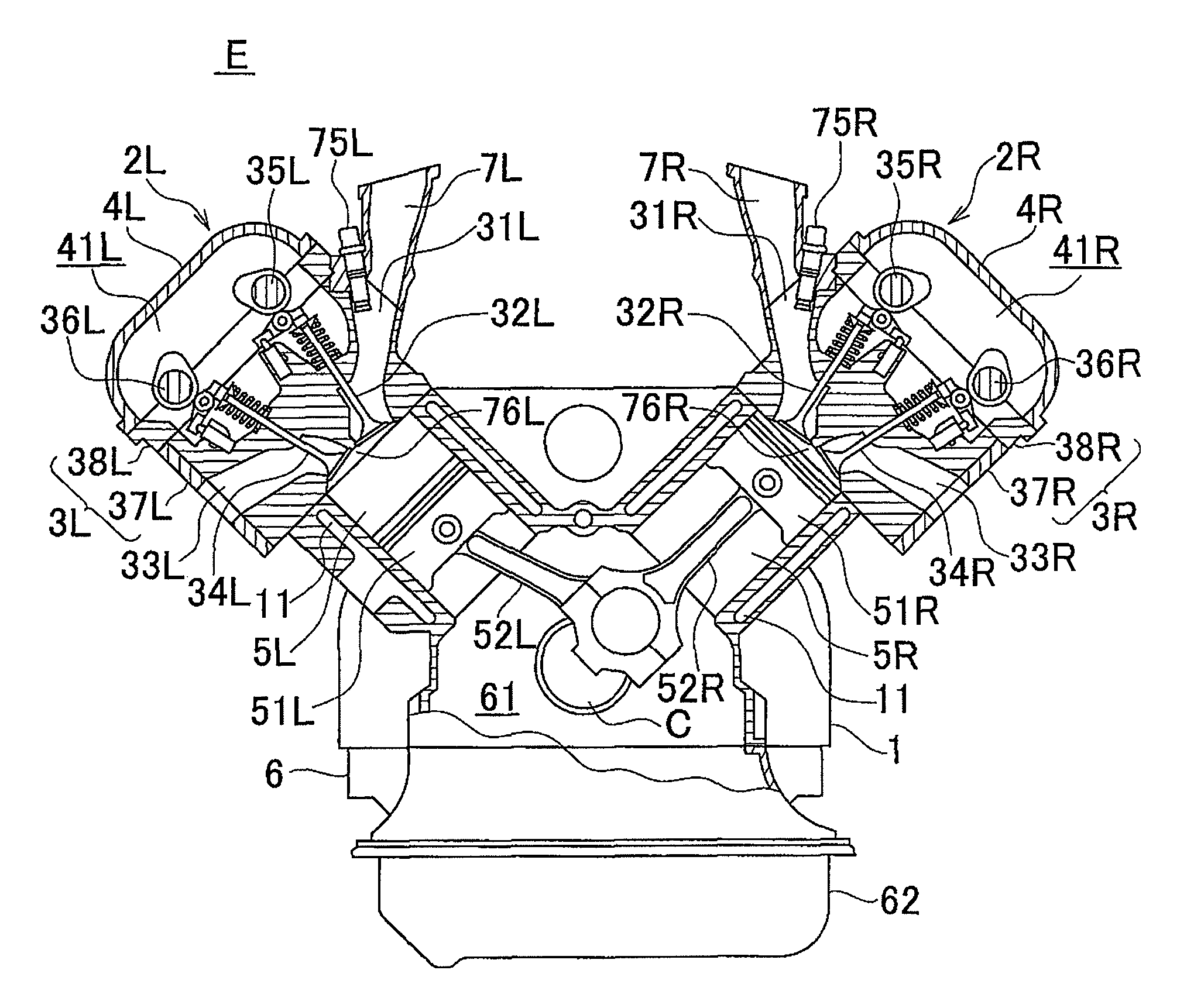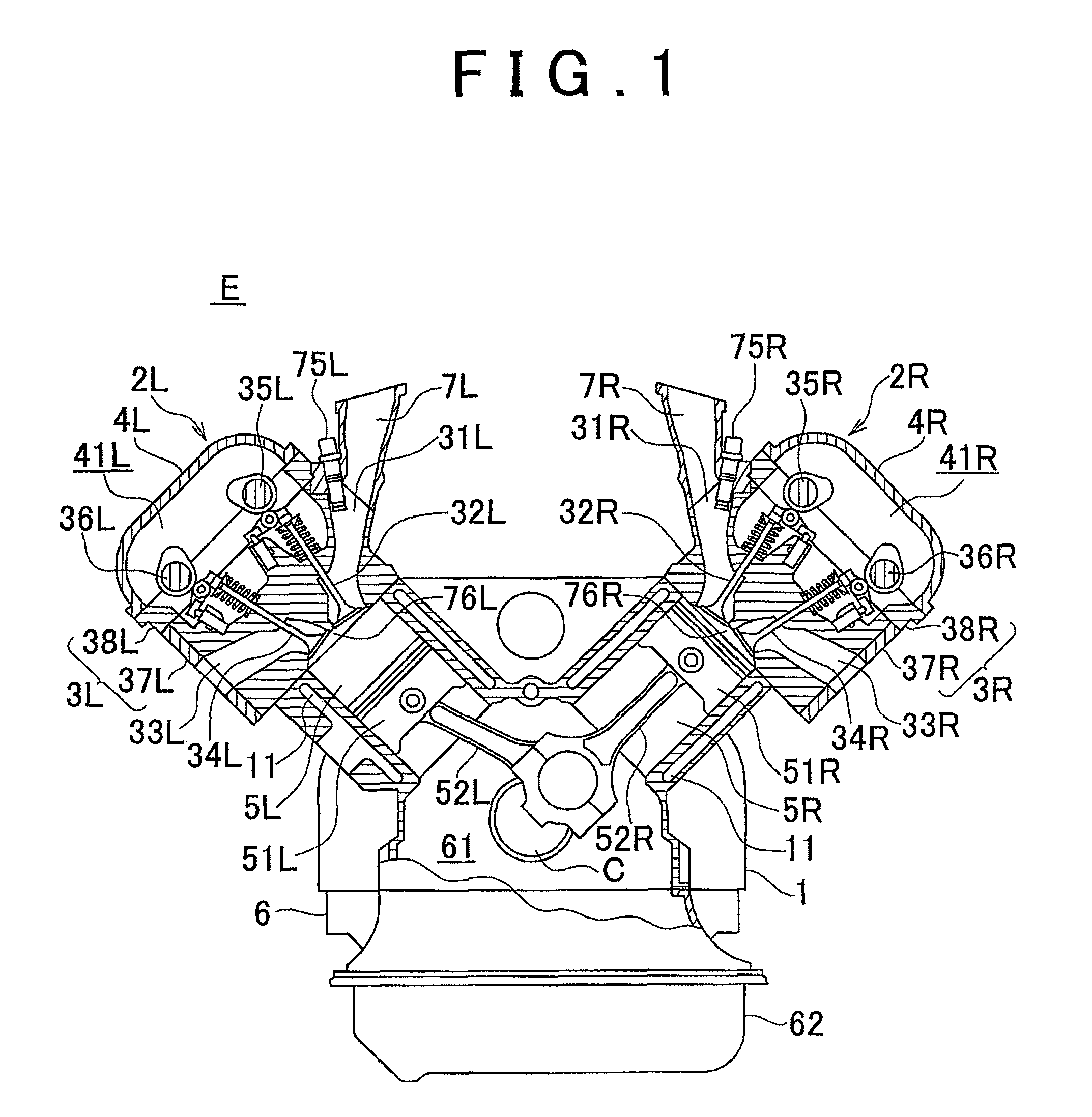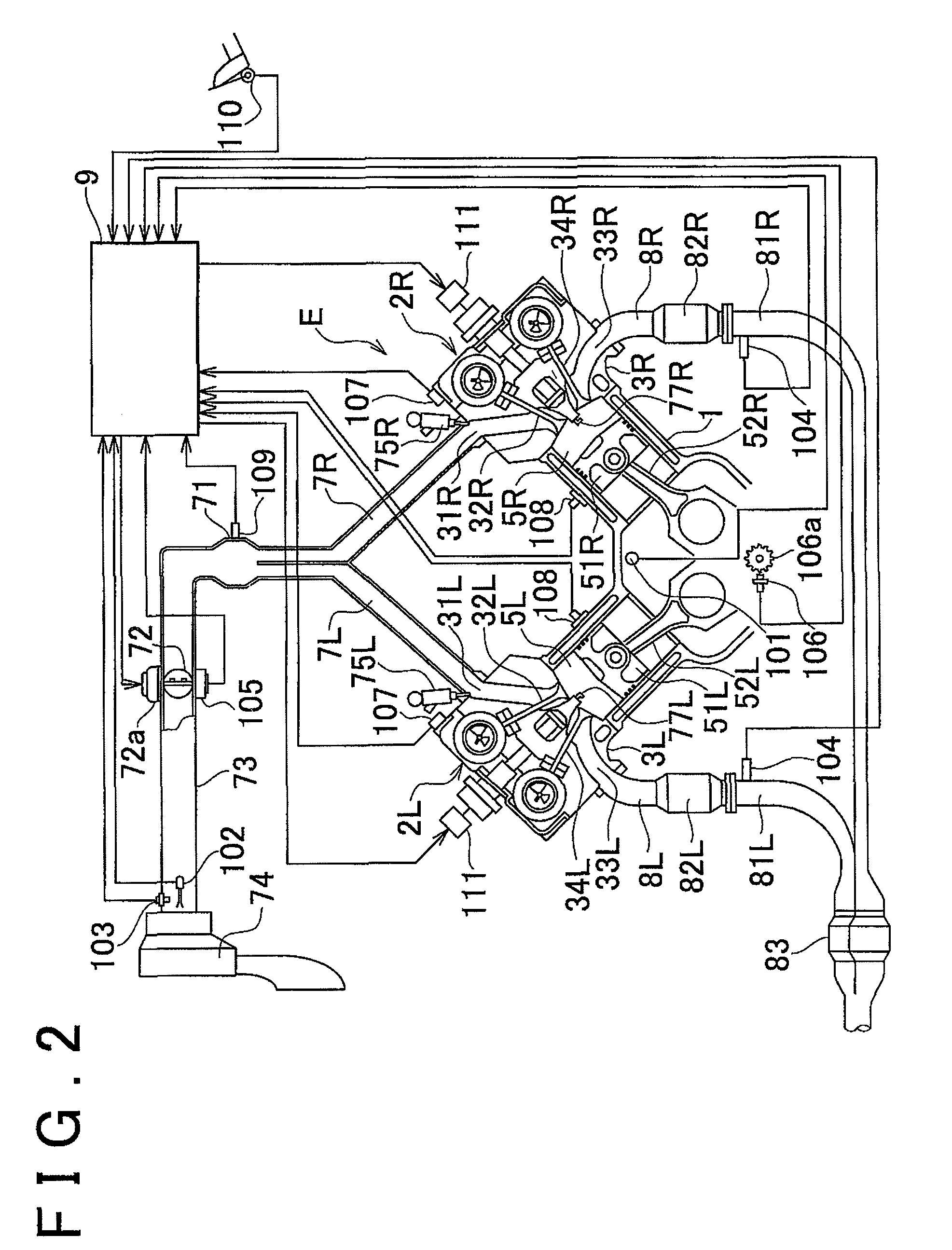Ignition timing control apparatus and ignition timing control method for internal combustion engine
a technology of ignition timing control and control apparatus, which is applied in mechanical equipment, electric control, machines/engines, etc., can solve the problems of a large amount of time required to stop knocking, a plurality of knocking, and the frequency of knocking to occur, so as to reduce the frequency of knocking
- Summary
- Abstract
- Description
- Claims
- Application Information
AI Technical Summary
Benefits of technology
Problems solved by technology
Method used
Image
Examples
first example
[0070]In the first example, for example, when a point indicating the operating state of the engine E moves into a low load region G1 shown in FIG. 6, the timing retarding control is executed to retard the ignition timing.
[0071]The low load region G1 shown in FIG. 6 is set based on the engine rotational speed ene and the engine load eklsm. More specifically, in the low load region G1, the engine load eklsm is equal to or above L1, and below L2 (L1≦eklsm2), and the engine rotational speed ene is equal to or above N1 and below N2 (N1≦ene2). The low load region G1 shown in FIG. 6 is regarded as the region where it is difficult to accurately set the estimated knocking occurrence, ignition timing, as described in the related art. Accordingly, when the point indicating the operating state of the engine E moves into the low load region G1, the timing retarding control is executed as described below.
[0072]Next, the timing retarding control in this example will be described with reference to ...
second example
[0096]In the second example, for example when the point indicating the operating state of the engine E moves into a low load region G2 shown in FIG. 8, a timing retarding control is executed to retard the ignition timing. The second example differs from the first example in that the degree of the influence of formation of deposits in the engine E is taken into account. Accordingly, the execution condition for executing the timing retarding process in the second example differs from the execution condition in the first example. Hereinafter, the difference between the first example and the second example will be mainly described, and the same and corresponding parameters and values as in the first example will be denoted by the same reference characters, and the detailed description thereof will be omitted.
[0097]First, a ratio learning operation, which is performed taking into account the degree of the influence of formation of deposits in the engine E, will be described. That is, in ...
PUM
 Login to View More
Login to View More Abstract
Description
Claims
Application Information
 Login to View More
Login to View More - R&D
- Intellectual Property
- Life Sciences
- Materials
- Tech Scout
- Unparalleled Data Quality
- Higher Quality Content
- 60% Fewer Hallucinations
Browse by: Latest US Patents, China's latest patents, Technical Efficacy Thesaurus, Application Domain, Technology Topic, Popular Technical Reports.
© 2025 PatSnap. All rights reserved.Legal|Privacy policy|Modern Slavery Act Transparency Statement|Sitemap|About US| Contact US: help@patsnap.com



